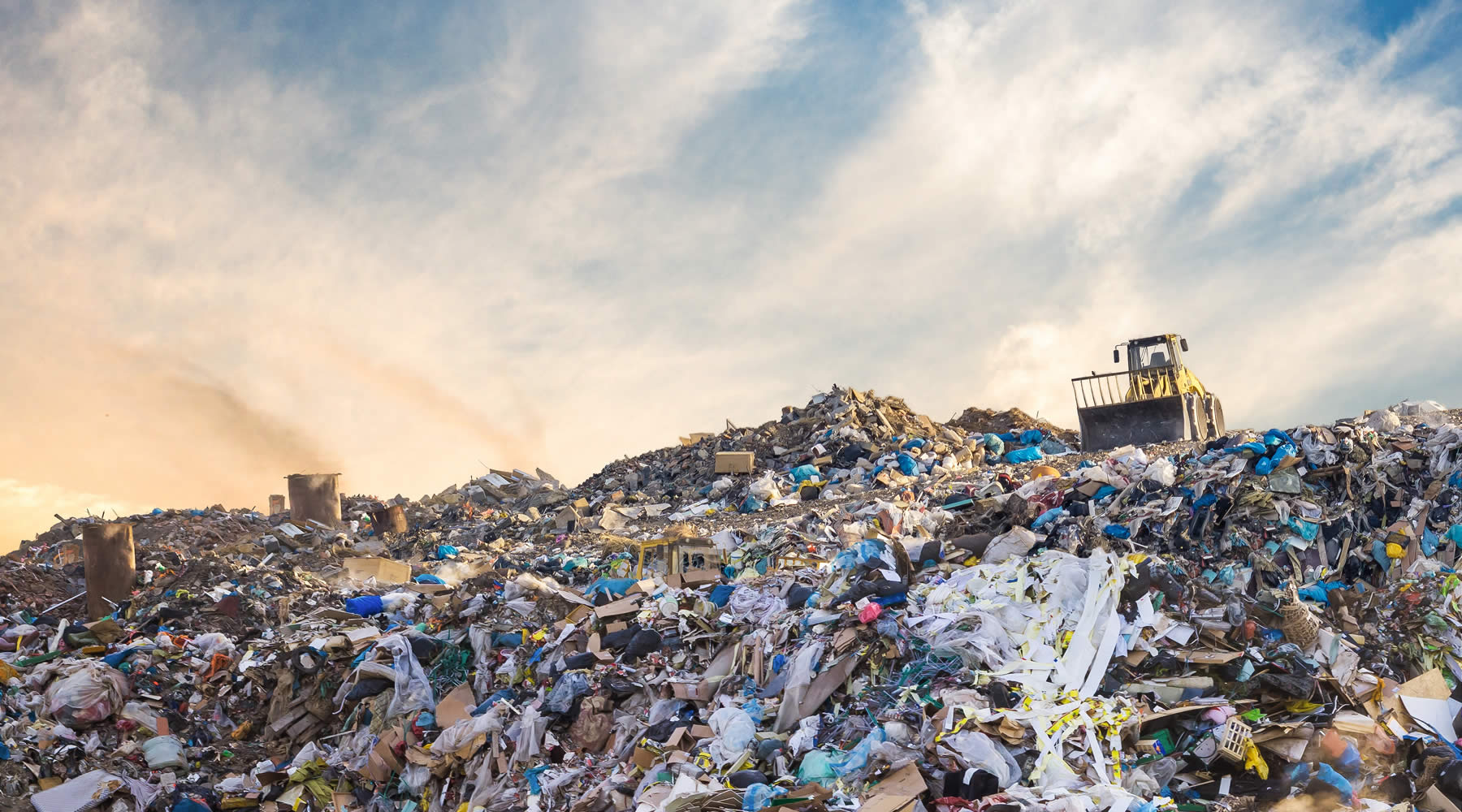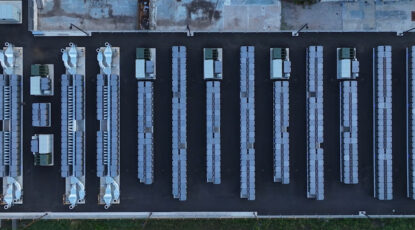Ten percent of U.S. greenhouse gas (GHG) emissions come from methane, and landfills are the third largest source of methane emissions in the country.
Waste in landfills generated more than 100 million metric tons of carbon dioxide (CO2) equivalents last year. That’s about as much CO2 as burning 109 billion pounds of coal.
What if, instead, we could capture that methane and use it to generate clean, renewable electricity? We would have a source of renewable power that’s available even when the sun isn’t shining and the wind stops blowing.
If all of the landfill gas in California were captured and converted into electricity using highly efficient, non-combustion technology such as a Bloom Energy Server, it could power 700,000 homes – roughly a city the size of San Diego. Similarly, New York’s landfill gas has the potential to power the state’s capital, Albany, four times over.
This is nearly reality.
Landfill Biogas Pilot Proves Increasing Commercial Readiness of Biogas Solution
At the Global Climate Action Summit in San Francisco last September, we described how a standard Bloom Energy Server coupled with a prototype clean-up system could effectively produce renewable electricity using raw biogas from landfill, waste water, or agricultural sources.
A few months later, we announced our first direct consumption biogas pilot at a landfill facility in the Southeast with our long-time partner, Southern Company.
Now, we can confirm that we’ve done it. With the help of our partners, we’ve developed a clean-up system that allows our fuel cells to operate on the treated gas at full capacity. The clean-up process is simple, cost-effective, and efficient; it doesn’t require the carbon dioxide removal that adds complexity and cost to the traditional treatment of biogas.
This is a huge breakthrough for one big reason: landfill gas is dirty. It contains high levels of contaminants including sulphur and siloxanes that could affect the performance of electricity generating systems.
Those contaminants and the difficulty of removing them from the gas, are big reasons why so little economically viable methane is used for power generation today.
For example, only half of California landfills capture and use their methane emissions at all. Most simply vent methane into the environment, flare it, or combust it – all three approaches have severe negative impacts on the environment and air quality.
Our clean-up system removes contaminants and conditions the gas so that it can be used safely and efficiently for electricity generation without compromising energy consumption or operating capacity.
In our pilot with Southern Company, once the gas was conditioned via the clean-up unit, it was fed into our on-site biogas-powered system. The 50-KW Bloom Energy Server has since operated and generated 100% renewable baseload power for the local grid.
So, What’s New Exactly?
Utilizing biogas to generate electricity isn’t a completely new idea. What’s unique about the approach that Bloom Energy and Southern Company have pioneered is that it is completely combustion-free.
Flaring methane or combusting it in generators might mitigate greenhouse gas effects, but it causes other, arguably worse, problems.
Fuel combustion emits criteria air pollutants like nitrogen oxides, sulphur oxides, and particulate matter that are extremely harmful to human health. These pollutants contribute to heart and lung disease as well as cause severe respiratory damage. Flaring gas still emits methane due to incomplete gas combustion, while also emitting other harmful pollutants like carbon dioxide, ‘black carbon,’ and criteria pollutants.
Until now, there was no proven, clean, highly efficient, and cost-effective technology to enable waste processing facilities to make renewable electricity from methane. We’re proud to have solved that problem.

The vast majority of methane from waste processing facilities ends up being vented to the environment, flared, or burned to generate electricity through combustion engines – all three of which, are dirty and negatively impact both public health and the environment. The alternative involves significant pre-treatment of the biogas before transporting as compressed gas or inserting into the natural gas pipeline, which are often quite costly.

With minimal and simple clean-up, Bloom Energy Servers can generate renewable electricity from methane. The clean-up process to remove contaminants is simple, cost-effective, and efficient; it doesn’t require the carbon dioxide removal that adds complexity and cost to the traditional treatment of biogas. Compared to other technologies, the Bloom Energy Server has one of the highest efficiencies because it can best utilize biogas as a fuel source to produce the most power.
The Path to Zero Carbon (Without Sacrificing Energy Resiliency)
The success of this pilot should excite waste processing facilities around the country. We can now use raw biogas in a meaningful way; we can take the methane out of the environment and efficiently, cost-effectively turn it into renewable electricity.
Importantly, we can also generate a new source of income or cost savings for those landfills or other waste processors by powering on-site facilities, or supplying electricity to the local grid.
Historically, large-scale combustion power has provided a baseload solution in order to balance out the peaks and troughs in supply and demand inherent to renewable power. As the adoption of intermittent renewable power continues, we will certainly need an equally reliable renewable, baseload solution to provide stability to the grid.
Biogas-powered fuel cells can provide this always-on, stable power, while catalyzing broader adoption of zero-carbon sources.
We believe every technology that reduces emissions relative to the current power supply should be part of the effort to remove carbon from the atmosphere.
Biogas-powered fuel cells can certainly be a part of that effort, and we’re excited to introduce a new technology that could advance the commercialization of such a unique source of renewable power in the near term.



